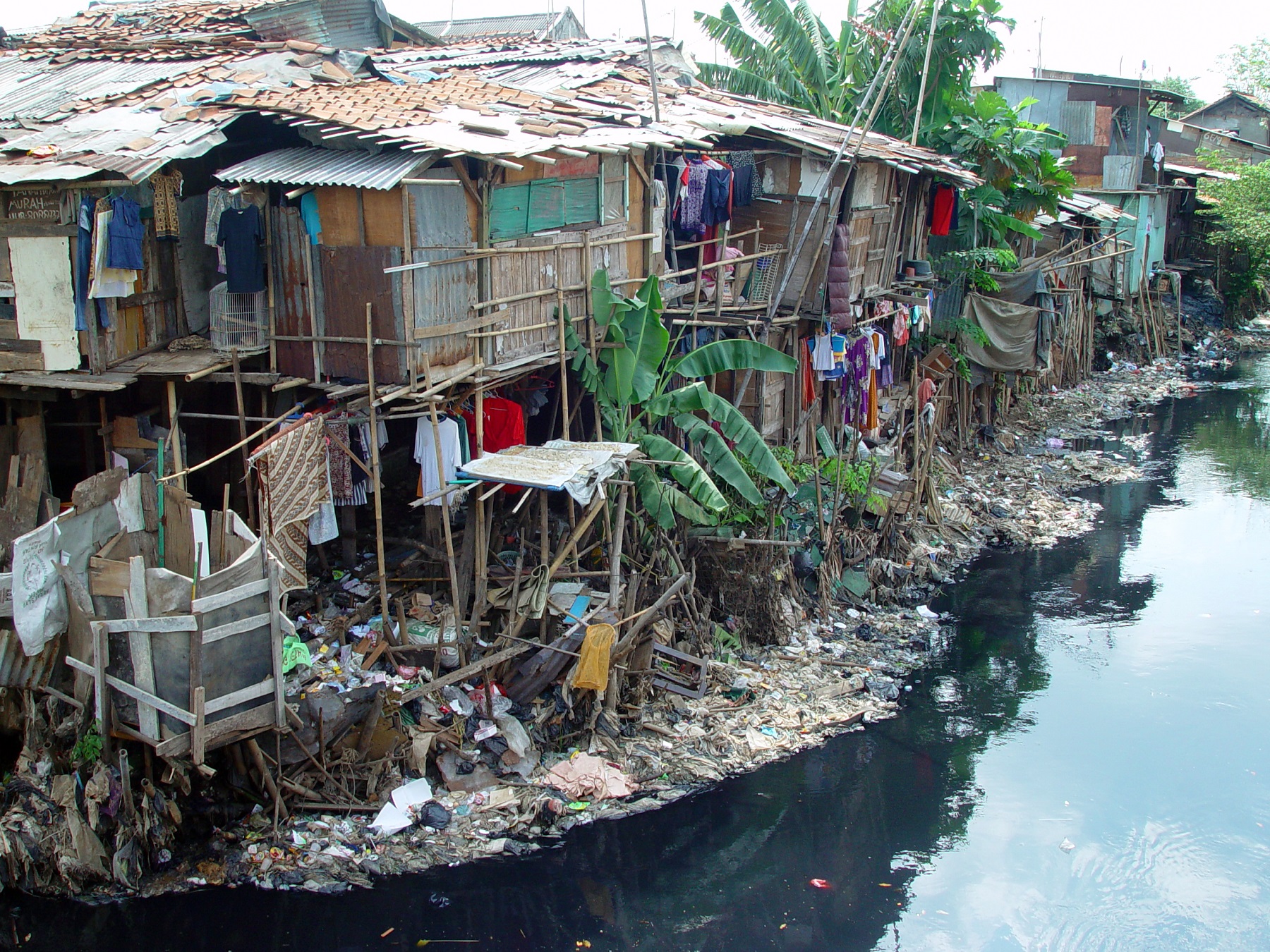Indonesia will get a new capital city, said the country’s President last week. Jakarta is sinking into the sea. This is not hot air, believe TU Delft experts.
As soon as the rainy season starts, the rubbish in the churning water gets stuck. (Photo: Wikimedia)
It happens every year during the rainy season. The rivers flood and a large part of the city is under water. The north of Jakarta is especially affected. It is sinking by centimetres every year because of intensive groundwater extraction. Add the pollution, high population density and traffic jams and you have a good image of the challenges facing the public administration.
And now they’ve had enough. At least the central government has had enough. Plans to build a series of islands off the coast to accommodate the population growth and a large sea wall had already been shelved. The Government has now decided to move elsewhere. President Joko Widodo announced this this week.
When asked, polder expert Dr Olivier Hoes of Civil Engineering and Geosciences said that the problems in the capital city will not be solved by moving the government buildings. “There are 30 million people in the region. Most of them do not have the money to move. The Government will still have to drastically improve the quality of the existing infrastructure for them.”
‘Residents throw their rubbish in the river bed during the dry season’
Hoes knows the region. He has been to Java regularly for decades, including to the university in Bandung where he is involved in improving the curriculum of the hydraulic engineering course.
“A lot of water flows from the mountains in the hinterland to Jakarta every rainy season. In the dry season with little water flow, the residents along the rivers throw their household waste in the dry river bed. As soon as the rainy season starts, the rubbish in the churning water gets stuck at bridges or other infrastructure that narrows the flow and everything floods. The rubbish collection system is not well organised and the rivers are hardly maintained.”
Groundwater is pumped up for drinking water in many places causing subsidence. “This exacerbates the situation. Much of the city is not connected to the drinking water mains. This must change if the subsidence is to be stopped. Tokyo managed it in around 1964. The urban infrastructure needs a huge overhaul. The roads as well. There are constant traffic jams.”
Professor Emeritus of hydraulic engineering, Prof. Marcel Stive, believes that tackling all these problems is much easier said than done. “I don’t think the Government’s announcement to choose a new location instead of continue investing in the city defence is speculation,” he says.
‘Experts have pored over Jakarta’s water and pollution problems for decades’
“Experts have pored over Jakarta’s water and pollution problems for decades. The problems are so massive that the Government has concluded that it is cheaper to build a new capital city. They probably hope that many residents will follow in its wake and that the pressure on the city eases. At the same time, it appears as though the city will just be left to its fate.”
Hydraulic engineer Arjen Luijendijk at the research institute Deltares, that works in Indonesia, also understands the Government’s considerations. “Even if you stop extracting groundwater today, the area will continue sinking for years. Compare it to the earthquakes in Groningen that will also continue even if we stop extracting gas. The realisation of the significance of the relationship between subsidence and the water problems has only come about in recent years with examining satellite images. Until recently, coastal erosion and flooding were put down to sea level rise.”
Do you have a question or comment about this article?
tomas.vandijk@tudelft.nl


Comments are closed.